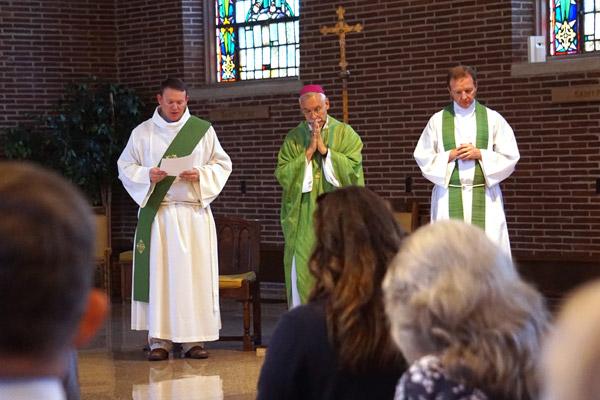
Bishop Anthony B. Taylor and the Diocese of Little Rock compiled a list of frequently asked questions regarding the Clergy Disclosure List released Sept. 10. More information on the priests and more FAQs is available at dolr.org/clergy-disclosure-list.
Please read our Comments Policy before posting.
Article comments powered by Disqus Fewer abuse charges in U.S. last year, more work needed
Fewer abuse charges in U.S. last year, more work needed
 Retired pope has full support of Pope Francis, aide says
Retired pope has full support of Pope Francis, aide says
 Benedict XVI corrects statement for Munich abuse report
Benedict XVI corrects statement for Munich abuse report
 McCarrick report says serious rumors weren’t investigated
McCarrick report says serious rumors weren’t investigated
 A year later, Catholic Church checks progress on abuse
A year later, Catholic Church checks progress on abuse
 U.S. priest to receive reports of abuse at Vatican City State
U.S. priest to receive reports of abuse at Vatican City State
 Winning directory photo honors Our Lady of Guadalupe
Winning directory photo honors Our Lady of Guadalupe
 St. Paul says: How does the Bible define love?
St. Paul says: How does the Bible define love?
 6 steps to getting married in Diocese of Little Rock
6 steps to getting married in Diocese of Little Rock
 Most frequently asked questions on Catholic marriage
Most frequently asked questions on Catholic marriage
 St. Joseph a model of solidarity with immigrants
St. Joseph a model of solidarity with immigrants
 Two gifts after Jesus’ death: Virgin Mary and Eucharist
Two gifts after Jesus’ death: Virgin Mary and Eucharist
 Why we have an altar, and not just a communion table
Why we have an altar, and not just a communion table
 Pope: Wars should be resolved through nonviolence
Pope: Wars should be resolved through nonviolence
 Living relationship with Jesus Christ in the Eucharist
Living relationship with Jesus Christ in the Eucharist